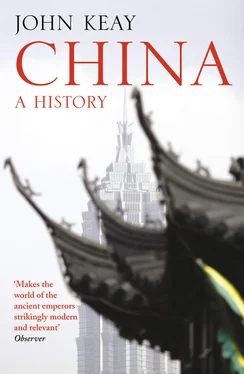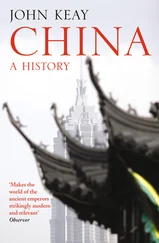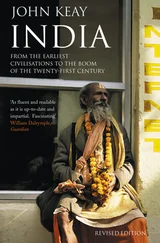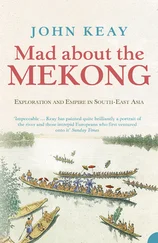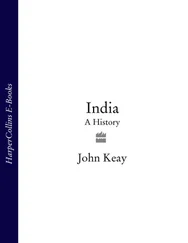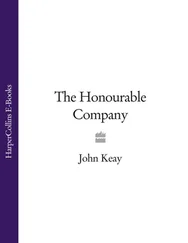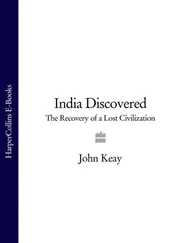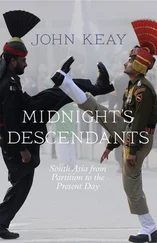
Harper Press An imprint of HarperCollins Publishers 1 London Bridge Street London SE1 9GF
www.harpercollins.co.ukVisit our authors’ blog at www.fifthestate.co.ukLove this book? www.bookarmy.com
This Harper Press paperback edition published 2009
First published in Great Britain by Harper Press in 2008
Copyright © John Keay 2008 and 2009
John Keay asserts the moral right to be identified as the author of this work
A catalogue record for this book is available from the British Library
Find out more about HarperCollins and the environment at
www.harpercollins.co.uk/green
All rights reserved under International and Pan-American Copyright Conventions. By payment of the required fees, you have been granted the non-exclusive, non-transferable right to access and read the text of this e-book on screen. No part of this text may be reproduced, transmitted, downloaded, decompiled, reverse engineered, or stored in or introduced into any information storage and retrieval system, in any form or by any means, whether electronic or mechanical, now known or hereinafter invented, without the express written permission of HarperCollins e-books.
Source ISBN: 9780007221783
Ebook Edition © MARCH 2010 ISBN: 9780007372089
Version: 2015-02-12
This ebook is sold subject to the condition that it shall not, by way of trade or otherwise, be lent, re-sold, hired out or otherwise circulated without the publisher’s prior consent in any form of binding or cover other than that in which it is published and without a similar condition including this condition being imposed on the subsequent purchaser.
For Julia
The Master said, ‘Is it not a pleasure, having learned something, to try it out at due intervals? Is it not a joy to have like-minded friends come from afar? Is it not gentlemanly not to take offence when others fail to appreciate your abilities?’
Confucius, The Analects, Book I, i 1
He who does not forget the past is master of the present.
Sima Qian, Shiji 2
Cover Page
Title Page
Copyright
Dedication
Epigraph
INTRODUCTION
1 RITES TO WRITING
2 SAGES AND HEROES
3 THE FIRST EMPIRE
4 HAN ASCENDANT
5 WITHIN AND BEYOND
6 WANG MANG AND THE HAN REPRISE
7 FOUR HUNDRED YEARS OF VICISSITUDE
8 SUI, TANG AND THE SECOND EMPIRE
9 HIGH TANG
10 RECONFIGURING THE EMPIRE
11 CAVING IN
12 BY LAND AND SEA
13 THE RITES OF MING
14 THE MANCHU CONQUEST
15 DEATH THROES OF EMPIRE
16 REPUBLICANS AND NATIONALISTS
EPILOGUE
Keep Reading
NOTES
BIBLIOGRAPHY
INDEX
ACKNOWLEDGEMENTS
About the Author
By the Same Author
Praise
About the Publisher
INTRODUCTION
REWRITING THE PAST
CHINA’S ECONOMIC RESURGENCE IN THE POST-MAO era has not been without its casualties. Gone are the Chairman’s portraits, the mass parades of flag-waving workers and the hoe-toting brigades on their collectivised farms. Apartment blocks, tightly mustered and regimentally aligned, perform the new choreography; flyovers vault the rice paddies, cable cars abseil the most sacred of mountains, hydrofoils ruffle the lakes beloved of poets. Familiar features in the historical landscape have either disappeared or been reconfigured as visitor attractions. Iconised for a market as much domestic as foreign, they make inviting targets for another demolitionist fraternity, that of international academe. When history itself is being so spectacularly rewritten, nothing is sacred. The Great Wall, the Grand Canal, the Long March, even the Giant Panda? Myths, declare the revisionist scholars, facile conflations, figments of foreign ignorance now appropriated to gratify Chinese chauvinism.
Contrary to the tourist brochures, the Great Wall has been shown to be not ‘over 2,000 years old’, not ‘6,000 miles [9,700 kilometres] long’, not ‘visible from outer space’ – not visible on the ground in many places – and never to have been a single continuous structure. 1It did not keep out marauding nomads nor was that its original purpose; instead of defending and defining Chinese territory, it was probably designed to augment and project it. 2Those sections near Beijing that may conveniently be inspected today have been substantially reconstructed for just such inspection; and the rubble and footings from which they rise are those of Ming fortifications no older than the palaces in the Forbidden City or London’s Hampton Court.
Likewise the Grand Canal. Reaching from the Yangzi delta to the Yellow River (Huang He), a distance of about 1,100 kilometres (700 miles), the canal is supposed to have served as a main artery between China’s productive heartland and its brain of government. Laid out in the seventh century AD, it did indeed connect the rice-surplus south to the often cereal-deficient north, so fusing the two main geographical components of China’s political economy and supplying a much-needed highway for bulk transport and imperial progresses. Yet it, too, was never a single continuous construction, more a series of well-engineered waterways interconnecting the various deltaic arms of the Yangzi, and elsewhere linking that river’s tributaries to those of the Huai River, whose tributaries were in turn linked to the wayward Yellow River. The system was rarely operational throughout its entirety because of variable water flow, the rainy season in the north not coinciding with that in the south; colossal manpower was needed to haul the heavily laden transports and work the locks; dredging and maintenance proved prohibitively expensive; and so frequent were the necessary realignments of the system that there are now almost as many abandoned sections of Grand Canal as there are of Great Wall. 3
More controversially, the Long March, that 1934–35 epic of heroic communist endeavour, has been disparaged as neither as long nor as heroic as supposed. It is said the battles and skirmishes en route were exaggerated, if not contrived, for propaganda purposes; and of the 80,000 troops who began the march in Jiangxi in the south-east, only 8,000 actually foot-slogged their way right round China’s mountainous perimeter to Yan’an in the north-west. As for the rest, some perished but most simply dropped out long before the 9,700-kilometre (6,000-mile) march was completed. And of those who did complete it, one at least seldom marched; Mao, we are assured, was borne along on a litter. 4
Maybe the Giant Panda, a byword for endangered icons if ever there was one, is on safer ground. In the 1960s and ’70s the nearly extinct creature, together with some acrobatic ping-pong players, emerged as a notable asset in the diplomatic arsenal of the beleaguered People’s Republic. Much sought after by zoos worldwide, the pandas, especially females, were freely bestowed on deserving heads of state. The presentations were described as ‘friendship gestures’, and experimental breeding was encouraged as if a successful issue might somehow cement the political entente. But not any more. From sparse references in classic texts such as the ‘Book of Documents’ ( Shu-jing or Shangshu , bits of which may date from the second millennium BC) a pedigree of undoubted antiquity has been constructed for the panda and a standard name awarded to it. Now known as the Daxiongmao or ‘Great Bear-Cat’, its habits have been found sufficiently inoffensive to merit its promotion as a ‘universal symbol of peace’; its numbers have stabilised, perhaps increased, thanks to zealous conservation; and lest anyone harbour designs on such a national paragon, no longer may Giant Pandas be expatriated. All are Chinese pandas. Foreign zoos may only lease them, the lease being for ten years, the rental fee around $2 million per annum, and any cubs born during the rental being deemed to inherit the nationality of their mother – and the same terms of contract. Like its piebald image as featured in countless brand logos, the Giant Panda has itself become a franchise.
Читать дальше
